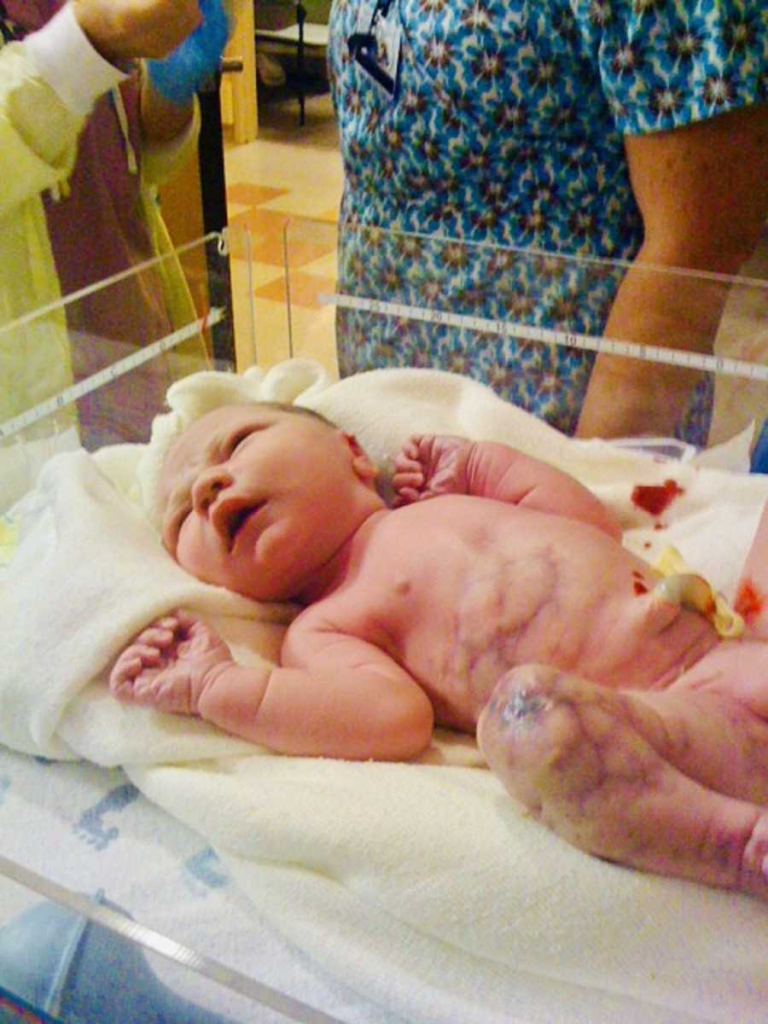Andrea West and her future spouse became friends during their senior year of college. After finishing their studies, they moved to Andreas’ hometown after being swept away by a passionate affair. They were engaged quickly after the meeting, and they soon delightedly told their loved ones that Andrea was expecting their first child. Andrea was giddy with happiness.

Sadly, the happy environment was replaced with sadness at eleven weeks when Andrea miscarried. “I was a complete mess. I had no idea what to do, who to talk to, what to talk about, or who could assist me. I had no idea that 1 in 4 women experienced the same problems, and nobody talks about them. I wasn’t sure if I could ever cope with getting pregnant again.”
Andrea’s anxiousness waned over time, helped by her loving husband’s continuous support.
Fortunately, she conceived once more. This time, she vowed firmly to take all action to ensure that her baby grew up healthily. She made sacrifices by forgoing various meals, including sushi, cold-cut meats, and cheeses. She also read extensively about pregnancy, deciding that everything would be fine now.
The months went by without any issues, which made Andrea feel relieved. She started having light contractions at the appointed hour, so she immediately drove to the hospital. She and her companion were given access to a delivery room when they arrived. A worrying shortage of amniotic fluid was discovered during an ultrasound just before they were supposed to be discharged. The medical staff concluded that labor needed to be induced right away.
Their child was then born.
Thankfully, everything went smoothly during delivery, and before the night was over, Andrea and her husband were happy to welcome their lovely son, Adam, into the world.
However, their initial happiness was swiftly overshadowed by an unexpected turn of events. Andrea’s companion saw a swarm of medical personnel quickly whisk Adam away from them, preventing them from performing the planned umbilical cord cutting.

Amidst the chaos, he caught a brief glimpse of their son being attended to by doctors, only to turn back to Andrea with a heart-wrenching statement. “Honey, there’s something wrong with Adam’s leg.” A crowd of twenty medical professionals had gathered around little Adam, leaving Andrea increasingly worried as time passed without any explanation.

Left alone in the ward while her mother and partner went to inform they’re concerned family members waiting outside, Andrea remained in the dark, unaware of what was happening with her baby. No one had yet revealed the nature of Adam’s condition. It would later be revealed that the right side of Adam’s abdomen and his entire right leg exhibited a disturbing marbled pattern of purple and black discoloration.

A diagnosis of CMTC was made, but what did that mean for this brand-new family?
After some uncertainty, Adam’s extremely unusual vascular abnormality, called Cutis Marmorata Telangiectatica Congenita (CMTC), was identified. Andrea and her husband didn’t know what to say. There were only 500 known occurrences of this disease worldwide when Adam was born.

Adam had his important organs put through a number of tests, happily passing each one without any issues. Andrea spent a great deal of time in the Neonatal Intensive Care Unit (NICU), which prevented her from getting any rest for four days. After a while, Adam was cleared to return home with a detailed treatment plan for his particular skin problem.
What is Congenital Cutis Marmorata Telangiectatica (CMTC)?
A rare congenital condition known as CMTC is characterized by the development of skin discoloration patches brought on by dilated surface blood vessels. As a result, the skin takes on a marbling or fishnet-like look and develops purple or blue discoloration. Aplasia cutis, a congenital skin abnormality, or ulcerations are occasionally present in people with CMTC.
It is significant to remember that CMTC can coexist with other diseases like Adams-Oliver syndrome. There may also be nevus flammeus, which causes pink or dark red spots on the skin, hemiatrophy, which causes muscle atrophy on one side of the body; glaucoma, which causes elevated fluid pressure inside the eye; and hypotrophy, which causes one leg to grow inward. Many of these cases, it is thought, truly represent different types of Klippel-Trenaunay syndrome or other related illnesses. like the illness of Cowden.
True CMTC most frequently exhibits soft tissue hypoplasia, which involves subcutaneous fat and muscle. It is important to note that the condition formerly known as macrocephaly-cutis marmorata telangiectasia congenita (M-CMTC) is now understood to be a unique genetic ailment known as macrocephaly-capillary malformation (M-CM/MCAP). Most CMTC cases are spontaneous occurrences with no recognized etiology. And genetic mosaicism is thought to be the cause.
Adam was resilient and never gave up.
According to Love What Matters, as time passed, it became clearer that Adam was a wonderful warrior. He is now a happy, healthy little child who has grown to enjoy chess and mathematics. Adam has even been able to engage in sports despite his condition’s effects on the weakness in his leg.

On Saturday, March 5, 2022, Andrea West made a touching post with the following statement: “Throughout it all, despite being aware of his differences from other children, Adam has never viewed his disability as an obstacle.” Andrea West is still very engaged in the CMTC Alliance, a worldwide nonprofit group that supports people with uncommon vascular malformations.
She fully commits herself to promote CMTC awareness and fighting for people who are impacted by it.
I urge you to share Adam’s story and think about making a donation if you want to show your support for the organization and have an influence on the lives of others with rare diseases like his. You can support awareness-building efforts and develop an understanding for people dealing with rare illnesses by sharing his journey.
Your kind donation has the potential to significantly impact people’s and their families quality of life. Together, we can support groups like the CMTC Alliance and give individuals in need the resources and support they so desperately need.

